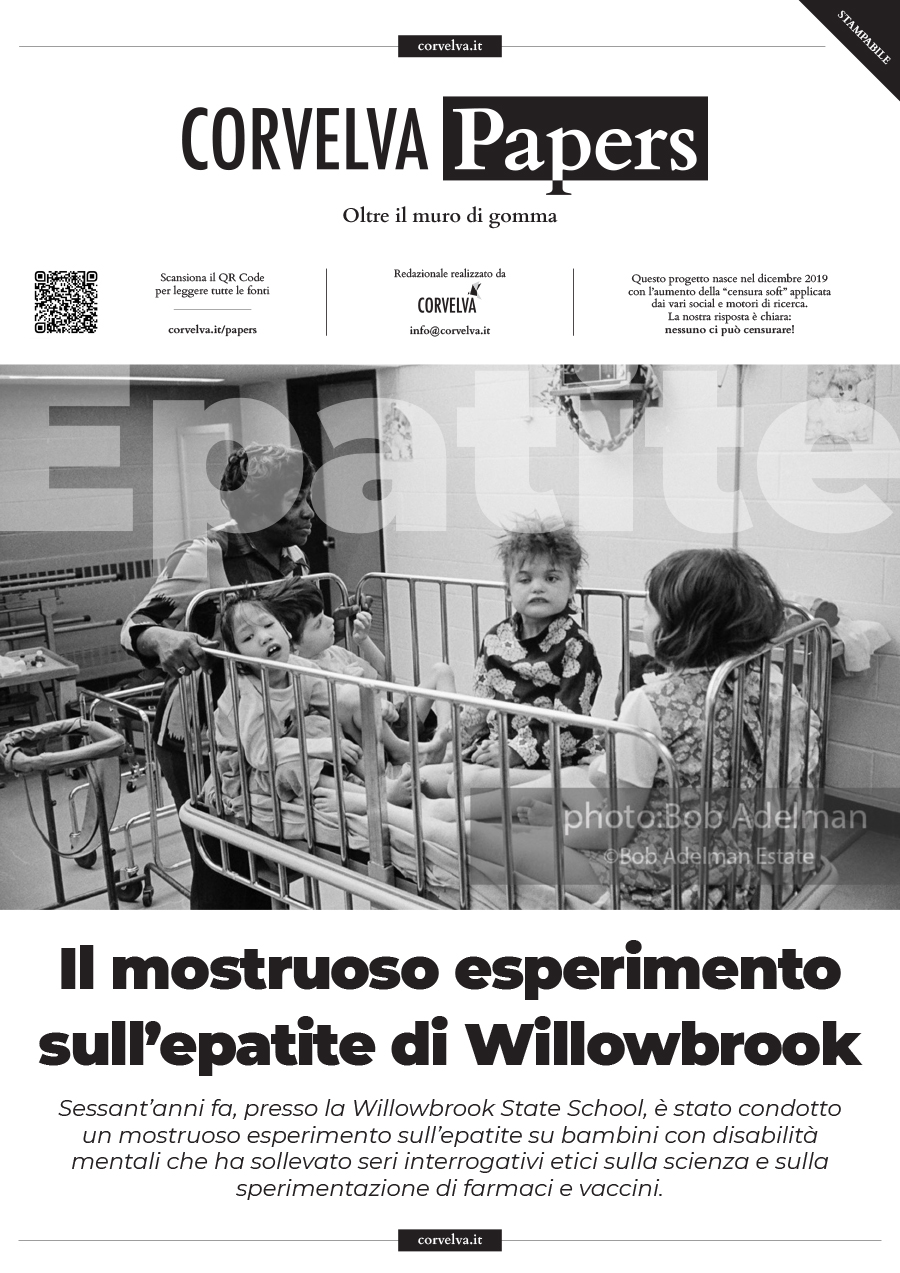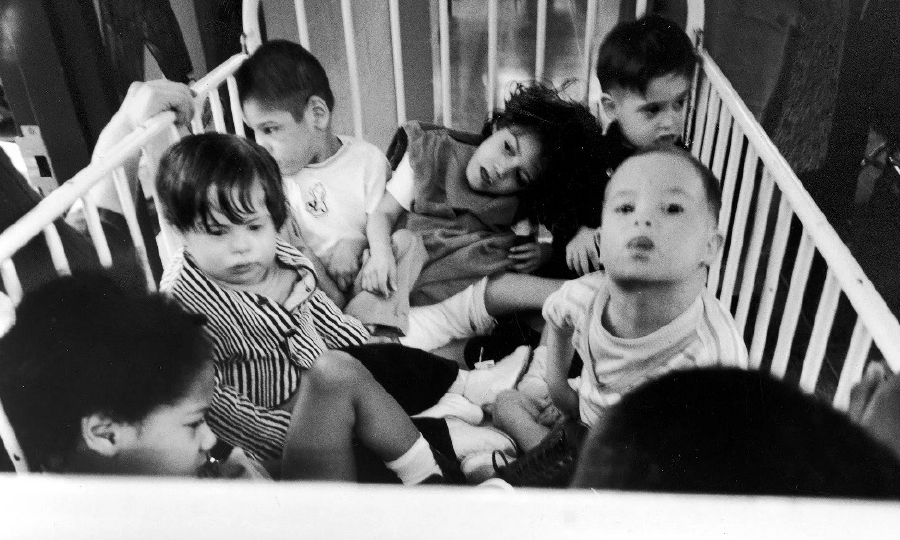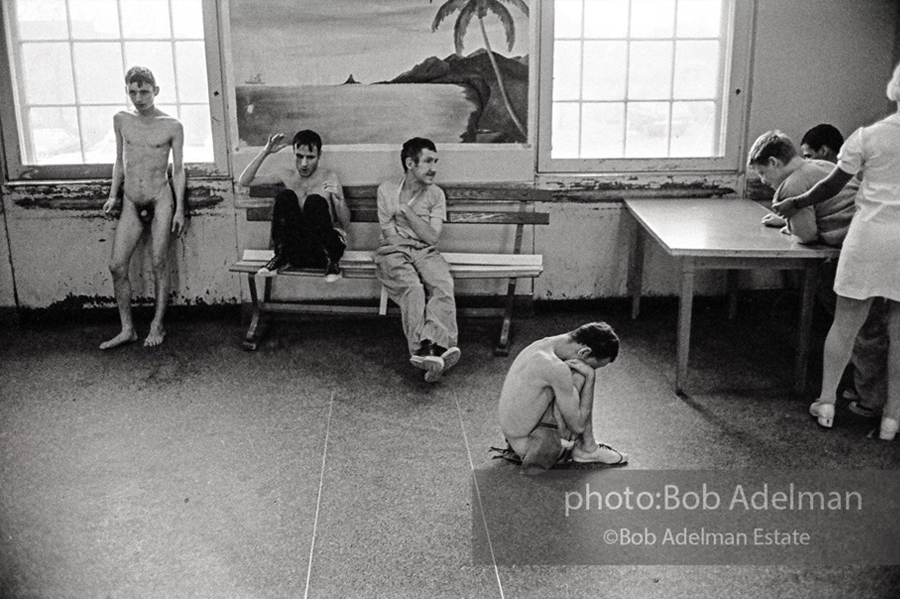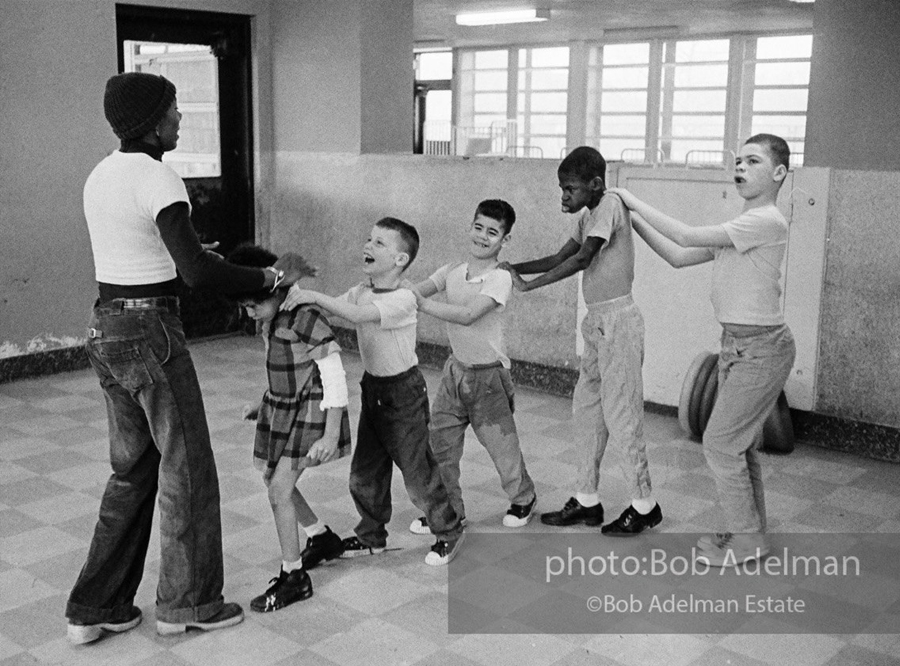The Monstrous Willowbrook Hepatitis Experiment

Do you want to listen to this article in podcast version? Click play!
Download the editorial in PDF
Sixty years ago, a monstrous hepatitis experiment was conducted on mentally disabled children at Willowbrook State School that raised serious ethical questions about science and drug and vaccine testing
Nina Galen was ten years old when she became part of one of the most controversial human experiments in American history. Her mother, Diana McCourt, was looking for an institution that could care for her severely autistic daughter and just before giving up hope, she found Willowbrook State School, an institution for children and adults with severe developmental problems in Staten Island, New York. To get Nina a place in this overcrowded facility, however, she had to make a pact with the devil and give in to tremendous blackmail: accepting that her daughter Nina participate in scientific research aimed at finding a vaccine against hepatitis.
Nina became one of many mentally disabled children, ages 5 to 10, in the care of Dr. Saul Krugman, a respected New York pediatrician who wanted to determine if there were multiple strains of hepatitis and if a vaccine could be created. Krugman and his partner, Dr. Joan Giles, used Willowbrook residents to test a preliminary vaccine against this disease, and from 1955 to 1970 Willowbrook children were injected with the virus itself to study their immunity.
The search for a vaccine became especially important to the United States during World War II, when hepatitis epidemics affected more than 50.000 American soldiers. To combat this and other diseases, the Surgeon General's office established the Armed Forces Epidemiological Board and in the early XNUMXs, Dr. Krugman, a former US Air Force flight surgeon, presented himself to the Epidemiological Board with a proposal: he wanted to create a hepatitis vaccine and he knew the perfect place to do his research, Willowbrook.
Saul Krugman arrived at the Willowbrook campus in 1955, eight years after it was built, and found himself in a school designed to accommodate 4.000 residents but perpetually overcrowded, with more than 6.000 guests. Disease and neglect were everywhere and many residents died as a result of lack of care and abandonment, as well as the constant physical abuse that Krugman was careful not to denounce.
In 1965, Robert F. Kennedy, then a Senator from New York, visited Willowbrook unannounced and left shocked. "There are no civil liberties for those placed in Willowbrook cells," he later testified before Congress, calling the institution a "snake pit."
When Dr. Krugman and Dr. Giles began the Willowbrook hepatitis experiments, they used the very inhumane conditions of this facility to their advantage to recruit new families. Despite the well-documented horrors, Willowbrook was still one of the only options for children with severe disabilities, and the waiting list was long, so Krugman could use blackmail as leverage by offering several parents, including Nina Galen's, the choice to skip the line and place their children in newer, cleaner, more staffed research wards if they joined his experiments. "I felt forced"McCourt said, "I felt like I was being denied help if I didn't take this opportunity". Krugman also used the leverage of perceived safety by telling parents that because hepatitis was already widespread in Willowbrook, their children might have a chance to get the vaccine and be protected. McCourt recalls being told her daughter could get an "antidote" to hepatitis if she joined the experiment, and when she asked why hepatitis studies couldn't be done on primates, she was told that using animals would be "too expensive."
The Willowbrook experimentation protocol, as we said, provided for also infecting healthy children with the virus through chocolate milk mixed with the feces of sick subjects in order to observe the symptoms of hepatitis. Once infected, they let them recover and then administered the virus again and at the end of each experiment Dr. Krugman published the results in important medical journals, including the New England Journal of Medicine, the Lancet and the Journal of the American Medical Association. In 1966, physician Henry K. Beecher published an article titled "Ethics and Clinical Research" which listed Willowbrook as an example of an unethical clinical trial and concluded that "there is no right to risk harm to one person for the benefit of others". Five years later, the Lancet's editorial board apologized for publishing Dr. Krugman's studies without greater skepticism. "The Willowbrook experiments have always held with them the hope that hepatitis may one day be prevented", the editors wrote, "but that could not justify administering infected material to children who would not directly benefit from it."

In 1972, Geraldo Rivera, then a local New York television reporter, snuck into the school grounds and broadcast the inhumane conditions at Willowbrook. He had received a tip about the living conditions of the residents from Michael Wilkins, a doctor at the school who was not involved in the hepatitis experiments. "It's been almost 50 years and talking about it still makes me cry", Rivera declared, 'The conditions were so awful'. Rivera recalls seeing naked children smeared in their own feces and banging their heads against the wall. "I imagine the situation I was in was similar to that of Jews in concentration camps." Investigative reporter Geraldo Rivera's exposé documentary about Willowbrook State School in New York won him the Peabody Award and caused such a stir that it led to a historic settlement in 1975 between the federal court and the state of New York, in which the latter agreed to move Willowbrook residents into small group homes.
Below you can watch the original video that aired in 1972, just by Geraldo Rivera.
NB: the documentary presents very strong images, we do not recommend viewing for sensitive audiences. If the video does not appear, you can watch it , promising.
In addition to the enormous ethical problems related to the Willowbrook experiment, we want to draw attention to something that we think is perhaps even more serious in this whole story: award-winning Dr. Krugman, an esteemed New York pediatrician and darling of a certain science, accelerated studies on a hepatitis vaccine and did it without qualms on children's skin. That pediatrician never really took care of the health of the school's little patients. Rivera had called it a Nazi lager, denounced since 1965 by Senator Kennedy, where defenseless and severely disabled people died either due to lack of treatment or due to brutal abuse and violence. Krugman's science was opposed by many, but still rewarded by "those who really matter". The "scientific community", he would say today.
Sources (click to open)
- https://www.forbes.com/sites/leahrosenbaum/2020/06/12/willowbrook-scandal-hepatitis-experiments-hideous-truths-of-testing-vaccines-on-humans/
- https://www.silive.com/news/2017/01/the_horrors_of_willowbrook_sta.html
- https://www.silive.com/news/page/dignity_in_danger_developmenta.html
- https://www.nytimes.com/1965/09/10/archives/excerpts-from-statement-by-kennedy.html
- https://untappedcities.com/2021/06/22/willowbrook-state-school/
- https://mn.gov/mnddc/parallels/five/5b/bobby-kennedy-snakepits.html
- https://www.nejm.org/doi/full/10.1056/NEJM196606162742405
- https://www.youtube.com/watch?v=IRK0LO-9ZYk
- https://www.nytimes.com/2020/02/21/nyregion/willowbrook-state-school-staten-island.html
- https://www.nytimes.com/1993/03/12/nyregion/big-day-for-ex-residents-of-center-for-the-retarded.html
- https://www.nytimes.com/1972/02/02/archives/tv-willowbrook-state-school-the-big-towns-leper-colony.html
- https://www.nature.com/articles/pr19812169.pdf
- https://pubmed.ncbi.nlm.nih.gov/6376835/


